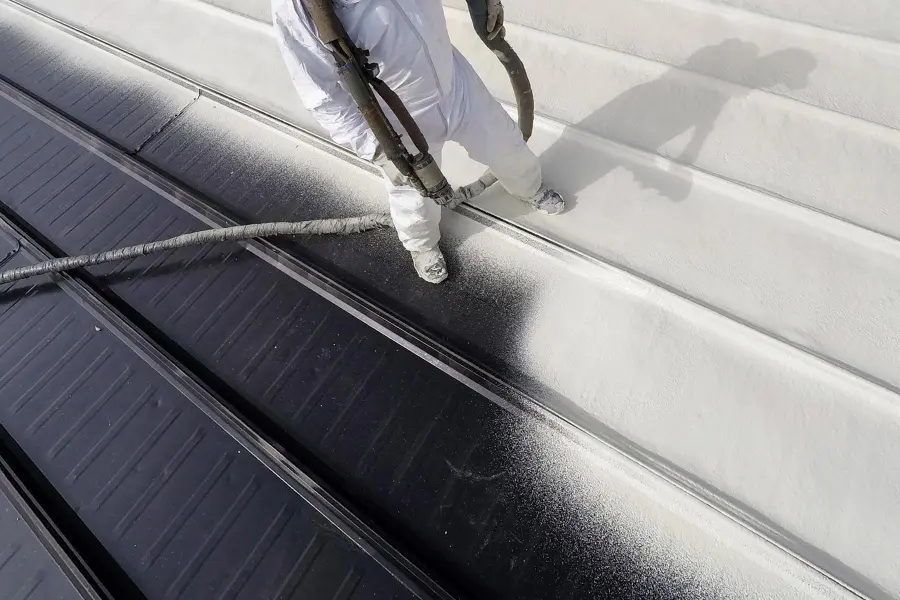
If you’re a homeowner or business owner in Anderson County, Texas, looking to improve energy efficiency, comfort, and overall insulation quality, spray foam roof insulation is an effective solution. D&D Insulation LLC, with over 25 years of experience in the industry, has helped countless homes and commercial properties achieve better insulation standards. Whether you’re curious about the process or deciding if spray foam suits your building, this in-depth guide will cover everything you need to know about installing spray foam roof insulation.
Spray foam roof insulation offers numerous benefits compared to traditional types like fiberglass or loose-fill. Its unique ability to form an airtight seal makes it ideal for roof insulation, especially in regions like Anderson County, where high temperatures and fluctuating weather can impact energy costs.
Benefits of Spray Foam Roof Insulation:
Before diving into the installation process, it’s essential to understand the two primary types of spray foam insulation that can be used for roof applications:
Both types have advantages, and a qualified installer from D&D Insulation LLC can help you determine which option best suits your needs.
The first step involves thoroughly inspecting your existing roof by a certified insulation expert. During this assessment, the technician will evaluate:
This assessment ensures the spray foam installation will be safe, effective, and customized for your property.
To ensure proper adhesion, the roof surface must be prepared meticulously. This includes:
Depending on the needs identified during the inspection, the installer will choose between open-cell foam and closed-cell spray foam. For roofs, closed-cell** spray foam** is often preferred due to its added rigidity and better water resistance.
The application requires specialized equipment, including proportioners and spray guns. The installer will ensure the correct ratio of chemicals is mixed for a consistent application.
The actual spray foam application is performed in layers:
The foam expands rapidly upon application, sealing gaps, cracks, and crevices while bonding tightly to the roof surface. This expansion makes spray foam particularly effective in providing an airtight seal.
Once the spray foam has been applied and cured, any excess foam will be trimmed to ensure a clean and even surface. This step ensures the insulation does not interfere with roofing fixtures or the roof’s overall appearance.
Additional protective coating is usually applied over the spray foam for exterior roof applications. This coating helps protect the foam from UV rays and weather exposure, prolonging the life of the insulation and maintaining its effectiveness. Standard coatings include silicone or acrylic, which provide UV protection and prevent water penetration.
After installation, a thorough inspection is conducted to verify:
D&D Insulation LLC technicians ensure every detail meets high-quality standards so you can immediately enjoy the benefits of improved insulation.
Spray foam insulation offers several distinct advantages over other traditional roofing insulation methods like fiberglass batt or loose-fill insulation:
To help you make a well-informed decision, let’s compare spray foam insulation with traditional fiberglass batt insulation and fiberglass loose-fill insulation:
For a tailored insulation solution, D&D Insulation LLC can guide you through the pros and cons to determine the best fit for your property.
Choosing the proper insulation for your roof significantly impacts your energy bills, indoor comfort, and overall property value. At D&D Insulation LLC, we have extensive experience installing spray foam roof insulation in Anderson County, Texas for residential and commercial properties.
If you’re ready to improve your home or business with top-notch spray foam roof insulation, call (903) 389-5705, visit our website at https://dndinsulation.com/, or email us at [email protected] to schedule your free estimate today.
Our experienced team is here to ensure your insulation needs are met with professionalism, reliability, and expertise. Don’t wait to enhance your energy efficiency and comfort with the trusted insulation experts at D&D Insulation LLC.
Yes, spray foam roof insulation is safe when installed by experienced professionals. Once cured, it is non-toxic and does not release harmful gases. Using a skilled team like D&D Insulation LLC ensures all safety protocols are followed during application.
When properly installed and maintained, spray foam roof insulation lasts 20 to 30 years. The protective coating applied over the foam also helps extend its lifespan.
In many cases, existing insulation must be removed to ensure proper adhesion of the spray foam. However, every situation is different, and an assessment by our team can determine the best approach for your roof.